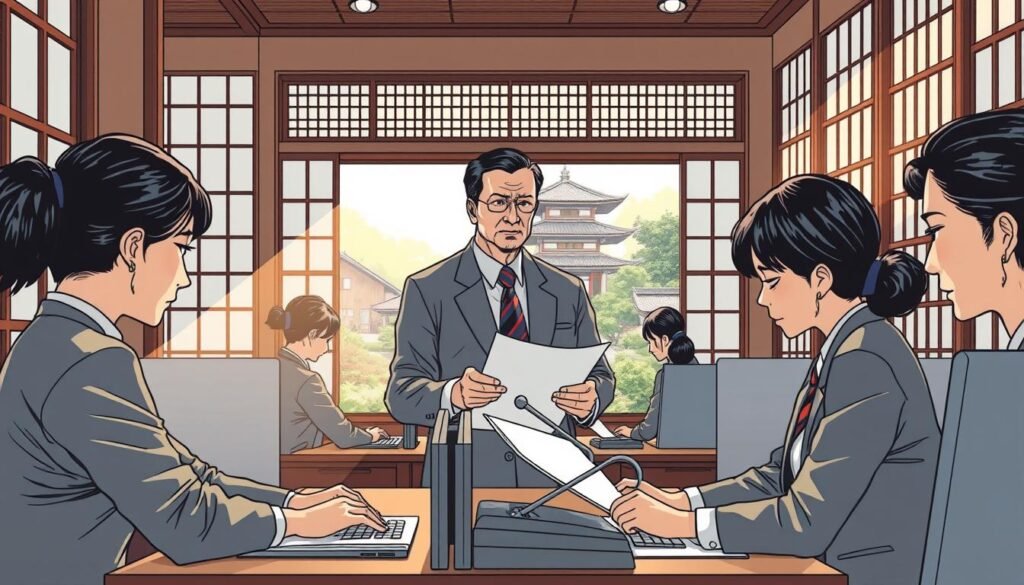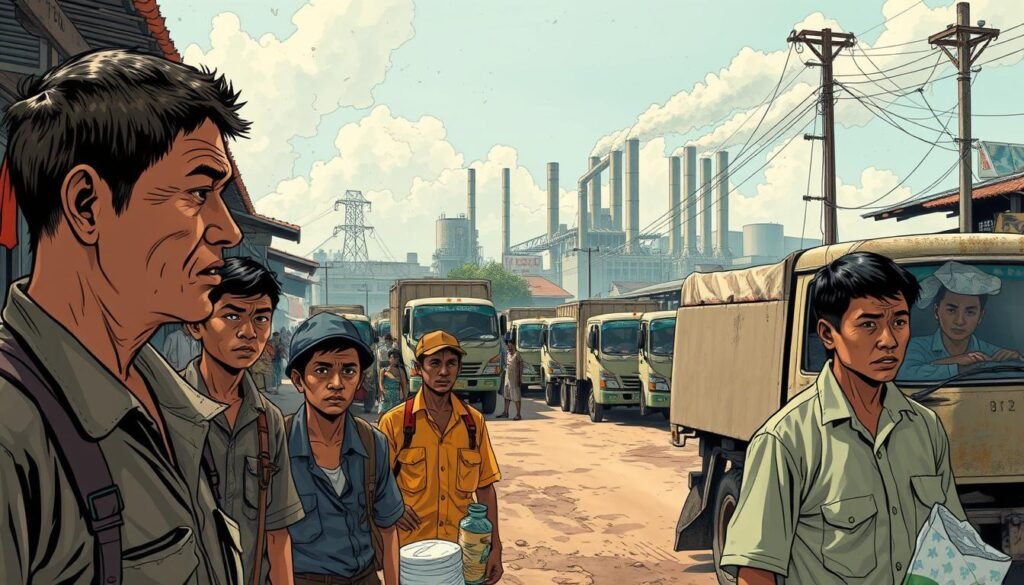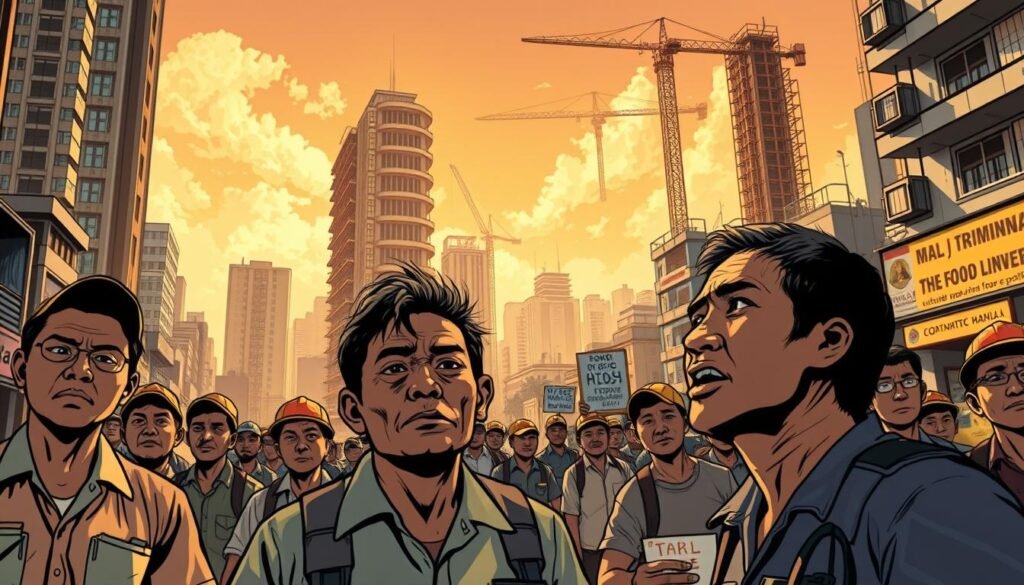Japanese labor policies have significantly shaped the lives of Filipino workers, particularly in sectors like healthcare, construction, and hospitality. The Philippine-Japan Economic Partnership Agreement (PJEPA), signed in 2006, opened doors for thousands of Filipinos to work in Japan. This agreement not only improved trade relations but also created opportunities for skilled workers to contribute to Japan’s economy.
Since the PJEPA’s implementation, over 2,200 Filipino health workers have been deployed to Japan, with many passing qualification exams. This reflects the growing demand for Filipino expertise in Japan’s labor market. The policies also address Japan’s aging population and labor shortages, making Filipino workers a vital part of the solution.
This article explores how these policies impact Filipino workers, focusing on health, employment trends, and legal frameworks. It also highlights the challenges and opportunities faced by workers in Japan, providing a comprehensive look at this evolving relationship.
Key Takeaways
- The PJEPA has boosted employment opportunities for Filipino workers in Japan.
- Over 2,200 Filipino health workers have been deployed to Japan since 2009.
- Japan’s aging population drives the demand for foreign workers.
- Filipino workers play a crucial role in addressing Japan’s labor shortages.
- The policies emphasize health and legal protections for foreign workers.
Understanding Japanese Labor Policies
The history of Japanese labor policies reflects a blend of tradition and modern economic demands. Over the decades, Japan has adapted its workforce strategies to address challenges like an aging population and globalization. These policies have shaped not only Japan’s economy but also its relationships with foreign workers, including Filipinos.

Historical Development and Context
Japan’s labor policies have roots in the post-World War II era. During the 1950s and 1960s, the focus was on rebuilding the economy. Policies emphasized job security and long-term employment. This system, known as “lifetime employment,” became a hallmark of Japanese corporate culture.
In the 1980s, globalization led to outsourcing and the rise of irregular employment. By the 1990s, Japan faced economic stagnation, prompting reforms. The government introduced measures to improve workforce flexibility and address labor shortages.
Recent Policy Changes and Their Rationale
Recent years have seen significant shifts in Japanese labor policies. The Kishida administration announced a ¥1 trillion investment to reskill workers. This move aims to boost productivity and address the growing wage gap.
Another key change is the introduction of the Freelance Act, effective November 2024. This law ensures timely payments to freelancers, reflecting Japan’s evolving work culture. Additionally, wage increases in 2024 mark the highest rate in 33 years, benefiting both local and foreign workers.
| Policy | Year | Impact |
|---|---|---|
| Freelance Act | 2024 | Ensures timely payments to freelancers |
| Wage Increase | 2024 | Highest rate in 33 years |
| Reskilling Investment | 2023 | ¥1 trillion to improve workforce skills |
These changes highlight Japan’s commitment to creating a more inclusive and dynamic labor market. For Filipino workers, these policies offer new opportunities while emphasizing health and legal protections.
Health Implications for Filipino Workers
Filipino workers in Japan face unique health challenges influenced by labor policies. These policies, while designed to address labor shortages, often lead to demanding work environments. The physical and mental toll on workers is significant, requiring attention to both immediate and long-term health needs.

Physical Health Considerations
Prolonged work hours and intense physical demands can strain the body. Many workers experience muscle fatigue, joint pain, and other physical ailments. For example, healthcare workers often report back pain from long shifts and repetitive tasks.
In industries like construction, the risk of injury is higher due to heavy lifting and exposure to hazardous conditions. Proper training and safety measures are essential to reduce these risks. However, the pressure to meet deadlines often overshadows these precautions.
Health care providers play a crucial role in monitoring workers’ physical health. Regular check-ups and timely medication can prevent complications. Yet, many workers struggle to access these services due to time constraints or lack of awareness.
Mental and Emotional Wellbeing under Policy Stress
The mental health of Filipino workers is equally impacted by labor policies. Long hours, job insecurity, and cultural adjustments contribute to stress and anxiety. Many workers report feeling isolated and overwhelmed.
Discrimination and workplace challenges further exacerbate these issues. Studies show that workers facing high levels of discrimination are more likely to report health conditions. This highlights the need for mental health support and advocacy.
Improved safeguards under modern labor policies can address these concerns. For instance, access to counseling services and stress management programs can make a significant difference. Employers must prioritize the wellbeing of their workforce to ensure productivity and retention.
Tracking health metrics is essential to mitigate risks. Regular monitoring of blood pressure, stress levels, and physical symptoms can prevent serious complications. Workers should also be encouraged to report health concerns without fear of repercussions.
For more insights into the broader impacts of labor policies, explore this detailed analysis.
Examining Labor Conditions and Worker Rights
The legal framework in Japan plays a crucial role in shaping the working conditions and rights of Filipino employees. These policies aim to ensure fair treatment and safety in various industries. However, challenges remain in enforcing these rights effectively.

Legal Framework and Protections
Japan’s labor laws provide a strong foundation for worker protections. These include minimum wage guarantees, limits on working hours, and safety regulations. For example, the Minimum Wage for Federal Contractors (MWFC) rule ensures fair compensation for workers engaged in federal contracts.
In 2023, the minimum wage for federal contractors was raised to $16.20 per hour. This adjustment reflects annual inflation and aims to improve living standards. Such measures are critical for foreign workers, including Filipinos, who often face wage disparities.
Additionally, Japan’s labor laws emphasize health and safety. Employers are required to provide training and protective equipment, especially in high-risk industries like construction. These regulations mirror the strict protocols seen in medical settings, ensuring workers are safeguarded from harm.
Role of Unions and Advocacy Groups
Unions and worker advocacy groups play a vital role in enforcing these protections. They help workers navigate legal challenges and advocate for policy reforms. For instance, unions have successfully lobbied for better wages and working conditions in sectors like healthcare and manufacturing.
However, many workers still face difficulties in accessing these resources. Language barriers and cultural differences often hinder their ability to seek help. Advocacy groups are working to bridge this gap by offering multilingual support and legal assistance.
Challenges and Recommended Reforms
Despite these protections, challenges persist. Many workers report long hours, unsafe conditions, and limited access to benefits. A study in Texas’s clean energy sectors found that 25% of workers experienced work-related injuries, highlighting the need for stricter enforcement.
To address these issues, experts recommend reforms such as:
- Strengthening penalties for labor violations.
- Expanding access to healthcare and insurance.
- Increasing awareness of worker rights through education programs.
| Policy | Impact |
|---|---|
| Minimum Wage Increase | Improved living standards for workers |
| Safety Regulations | Reduced workplace injuries |
| Union Advocacy | Better wages and working conditions |
These reforms can help create a more equitable and safe working environment for Filipino workers in Japan. By addressing these challenges, Japan can continue to benefit from the contributions of its foreign workforce while ensuring their rights are protected.
Economic and Social Impacts on the Filipino Workforce
The economic relationship between Japan and the Philippines has reshaped employment trends and family dynamics in the Philippines. As Filipino workers migrate to Japan to fill labor shortages, their home country experiences both opportunities and challenges. This section explores how Japanese policies influence local industries, families, and communities.

Employment Trends in the Philippines
Japan’s demand for skilled workers has led to significant shifts in the Philippine labor market. In December 2023, the Philippines recorded an unemployment rate of 3.1%, the lowest since 2005. This improvement reflects the growing opportunities for Filipinos abroad, particularly in Japan.
Wage and salary workers made up 62.7% of employed individuals, with 49.2% coming from private establishments. The construction sector saw the highest growth, followed by agriculture and hospitality. These trends highlight the interconnectedness of global labor markets.
However, challenges remain. Many workers face long hours and limited access to benefits. For example, a study found that 25% of workers in high-risk industries experienced work-related injuries. Addressing these issues requires stronger policies and enforcement.
Community and Family Perspectives
The migration of Filipino workers to Japan has transformed family structures and community dynamics. Remittances from overseas workers contribute significantly to the Philippine economy, improving living standards for many families. Yet, the absence of parents can strain relationships and affect children’s wellbeing.
Community-driven projects, such as the Kalahi CIDSS, have helped address these challenges. Since 2014, the project has benefited 17.5 million households, improving living conditions and fostering community resilience. These initiatives demonstrate the importance of local support systems.
Despite these efforts, many families struggle with the emotional toll of separation. Mental health support and counseling services are essential to help workers and their families cope with these challenges.
“The migration of workers is not just an economic issue; it’s a social one that requires holistic solutions.”
| Impact | Details |
|---|---|
| Unemployment Rate | 3.1% in December 2023, the lowest since 2005 |
| Remittances | Significant contributor to the Philippine economy |
| Community Projects | Kalahi CIDSS benefited 17.5 million households |
| Mental Health | Essential for coping with family separation |
For more insights into the broader impacts of labor policies, explore this detailed analysis.
Cultural and Policy Intersections: Bridging Gaps
Cultural and policy intersections play a pivotal role in shaping the experiences of Filipino workers in Japan. These intersections highlight how traditional practices and modern labor demands coexist, often creating both challenges and opportunities. Understanding this dynamic is essential for fostering better working conditions and mutual respect.

Worker Advocacy and Human Rights Initiatives
Worker advocacy groups and human rights organizations have been instrumental in addressing the gaps between cultural practices and labor policies. These groups work tirelessly to ensure fair treatment and improved conditions for Filipino workers. For example, organizations like the International Labor Organization (ILO) and local NGOs have launched campaigns to raise awareness about worker rights.
Initiatives such as the Social Health Bridge-Building Programme aim to reduce healthcare inequities by providing social support to vulnerable individuals. This program not only aids workers but also educates future healthcare professionals about the complexities of social determinants of health. Learn more about this initiative.
Innovative policy proposals are also emerging to address both economic efficiency and ethical labor practices. For instance, the introduction of multilingual support services in workplaces helps bridge communication gaps. This ensures that workers can report issues without fear of misunderstanding or retaliation.
| Initiative | Impact |
|---|---|
| Multilingual Support | Improved communication and issue reporting |
| Social Health Programme | Enhanced healthcare access and education |
| Worker Rights Campaigns | Increased awareness and fair treatment |
Improved communication between providers and governmental lines can help mitigate labor complications. For example, streamlined processes for filing complaints and accessing legal aid ensure that workers’ voices are heard. This fosters a more inclusive and supportive environment.
Looking ahead, policy changes must continue to prioritize worker well-being. By addressing cultural and policy intersections, Japan can create a more equitable labor market. This will not only benefit Filipino workers but also strengthen the economic and social ties between the two nations.
“Cultural diplomacy is a vital tool in bridging gaps and fostering understanding between nations.”
Conclusion
The evolving relationship between Japan and the Philippines has reshaped labor dynamics for Filipino workers. From economic opportunities to health challenges, these workers navigate a complex landscape shaped by policy and cultural intersections. The historical context of Japanese labor reforms highlights the need for continued advocacy and support.
Filipino workers have become vital to Japan’s economy, yet they face hurdles like long hours and limited access to healthcare. Improved rights and better healthcare protocols are essential to ensure their well-being. Advocacy groups and legal frameworks play a crucial role in addressing these issues.
Looking ahead, sustained efforts are needed to bridge gaps between policy and practice. By prioritizing worker health and rights, Japan can foster a more inclusive and equitable labor market. For further insights, explore this detailed analysis on global labor dynamics.
FAQ
What are the key historical developments in Japanese labor policies?
Japanese labor policies have evolved significantly since the post-war era, focusing on economic growth and worker protection. Key milestones include the establishment of the Labor Standards Act in 1947 and the introduction of work-life balance initiatives in the 2000s.
How do recent policy changes in Japan affect Filipino workers?
Recent changes, such as the expansion of the Technical Intern Training Program, aim to address labor shortages but often lead to challenges like long working hours and limited rights for Filipino workers.
What physical health issues do Filipino workers face under Japanese labor policies?
Many workers experience fatigue, musculoskeletal problems, and exposure to unsafe working conditions due to demanding schedules and inadequate healthcare access.
How do Japanese labor policies impact the mental health of Filipino workers?
The stress of cultural adjustment, isolation, and strict workplace regulations can lead to anxiety, depression, and other mental health concerns among Filipino workers.
What legal protections are available for Filipino workers in Japan?
Filipino workers are covered under Japan’s Labor Standards Act, which includes provisions for minimum wage, working hours, and safety. However, enforcement can be inconsistent, leaving some workers vulnerable.
How have employment trends in the Philippines been influenced by Japanese labor policies?
The demand for overseas workers in Japan has led to increased migration from the Philippines, shaping employment patterns and contributing to the country’s reliance on remittances.
What role do community and family play in the lives of Filipino workers in Japan?
Families often rely on remittances for financial support, while community networks provide emotional and social assistance to workers navigating life abroad.
What initiatives exist to advocate for the rights of Filipino workers in Japan?
Organizations like Migrante Japan and the Philippine Embassy work to protect workers’ rights, provide legal aid, and raise awareness about labor exploitation and human rights violations.
Source Links
- Philippines-Japan Economic Partnership Agreement (PJEPA) | Department of Trade and Industry Philippines
- Japan to accept 50,000 workers from PH under new hiring rules
- Understanding the Kishida Labor Mobility and Reskilling Initiatives
- Employment & Labour Laws and Regulations 2024 | Japan
- Determinants of Understanding of Labor Laws: Evidence from Japanese University Students – Employee Responsibilities and Rights Journal
- “I’m sick of being called a hero – I want to get paid like one”: Filipino American frontline workers’ health under conditions of COVID-19 and racial capitalism
- Workplace Discrimination and Health Among Filipinos in the United States
- Power and People: Working Conditions in the Texas Clean Energy Transition
- Latest Labor Force Survey results reflect continued improvement of PH jobs market and quality of jobs for Filipinos | Department of Finance
- Overview
- Eight steps for narrowing the maternal health disparity gap: Step-by-step plan to reduce racial and ethnic disparities in care
- The Intersection of Gender and Race in the Labor Market
- Conclusion – The Mobility of Labor and Capital

